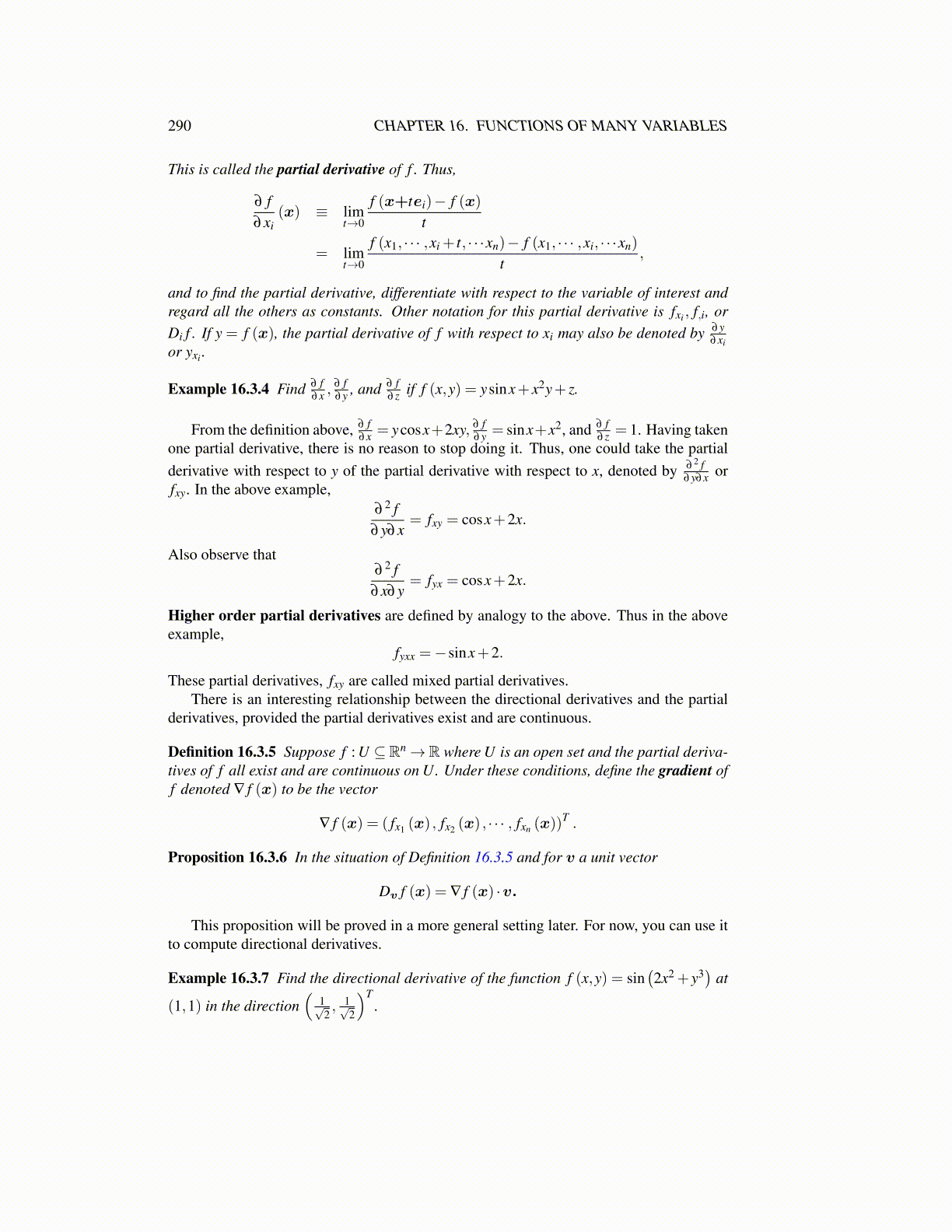
290 CHAPTER 16. FUNCTIONS OF MANY VARIABLES
This is called the partial derivative of f . Thus,
∂ f∂xi
(x) ≡ limt→0
f (x+tei)− f (x)t
= limt→0
f (x1, · · · ,xi + t, · · ·xn)− f (x1, · · · ,xi, · · ·xn)
t,
and to find the partial derivative, differentiate with respect to the variable of interest andregard all the others as constants. Other notation for this partial derivative is fxi , f,i, orDi f . If y = f (x), the partial derivative of f with respect to xi may also be denoted by ∂y
∂xior yxi .
Example 16.3.4 Find ∂ f∂x ,
∂ f∂y , and ∂ f
∂ z if f (x,y) = ysinx+ x2y+ z.
From the definition above, ∂ f∂x = ycosx+2xy, ∂ f
∂y = sinx+x2, and ∂ f∂ z = 1. Having taken
one partial derivative, there is no reason to stop doing it. Thus, one could take the partialderivative with respect to y of the partial derivative with respect to x, denoted by ∂ 2 f
∂y∂x orfxy. In the above example,
∂ 2 f∂y∂x
= fxy = cosx+2x.
Also observe that∂ 2 f
∂x∂y= fyx = cosx+2x.
Higher order partial derivatives are defined by analogy to the above. Thus in the aboveexample,
fyxx =−sinx+2.
These partial derivatives, fxy are called mixed partial derivatives.There is an interesting relationship between the directional derivatives and the partial
derivatives, provided the partial derivatives exist and are continuous.
Definition 16.3.5 Suppose f : U ⊆Rn→R where U is an open set and the partial deriva-tives of f all exist and are continuous on U. Under these conditions, define the gradient off denoted ∇ f (x) to be the vector
∇ f (x) = ( fx1 (x) , fx2 (x) , · · · , fxn (x))T .
Proposition 16.3.6 In the situation of Definition 16.3.5 and for v a unit vector
Dv f (x) = ∇ f (x) ·v.
This proposition will be proved in a more general setting later. For now, you can use itto compute directional derivatives.
Example 16.3.7 Find the directional derivative of the function f (x,y) = sin(2x2 + y3
)at
(1,1) in the direction(
1√2, 1√
2
)T.